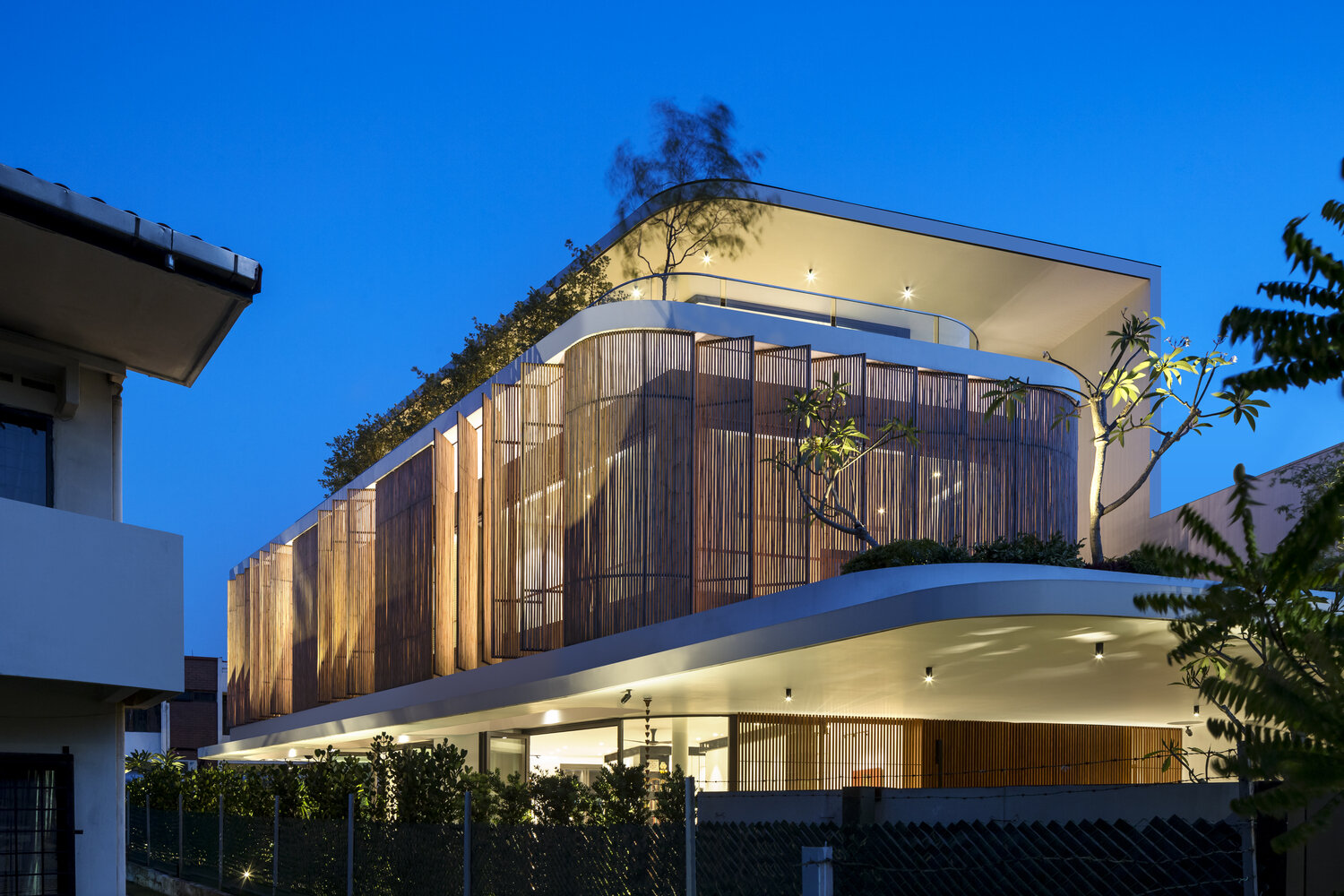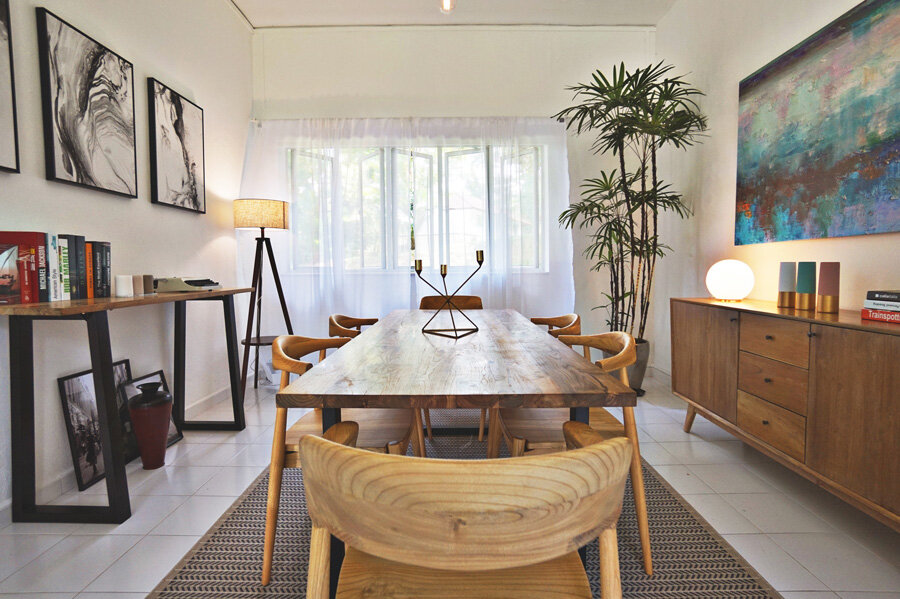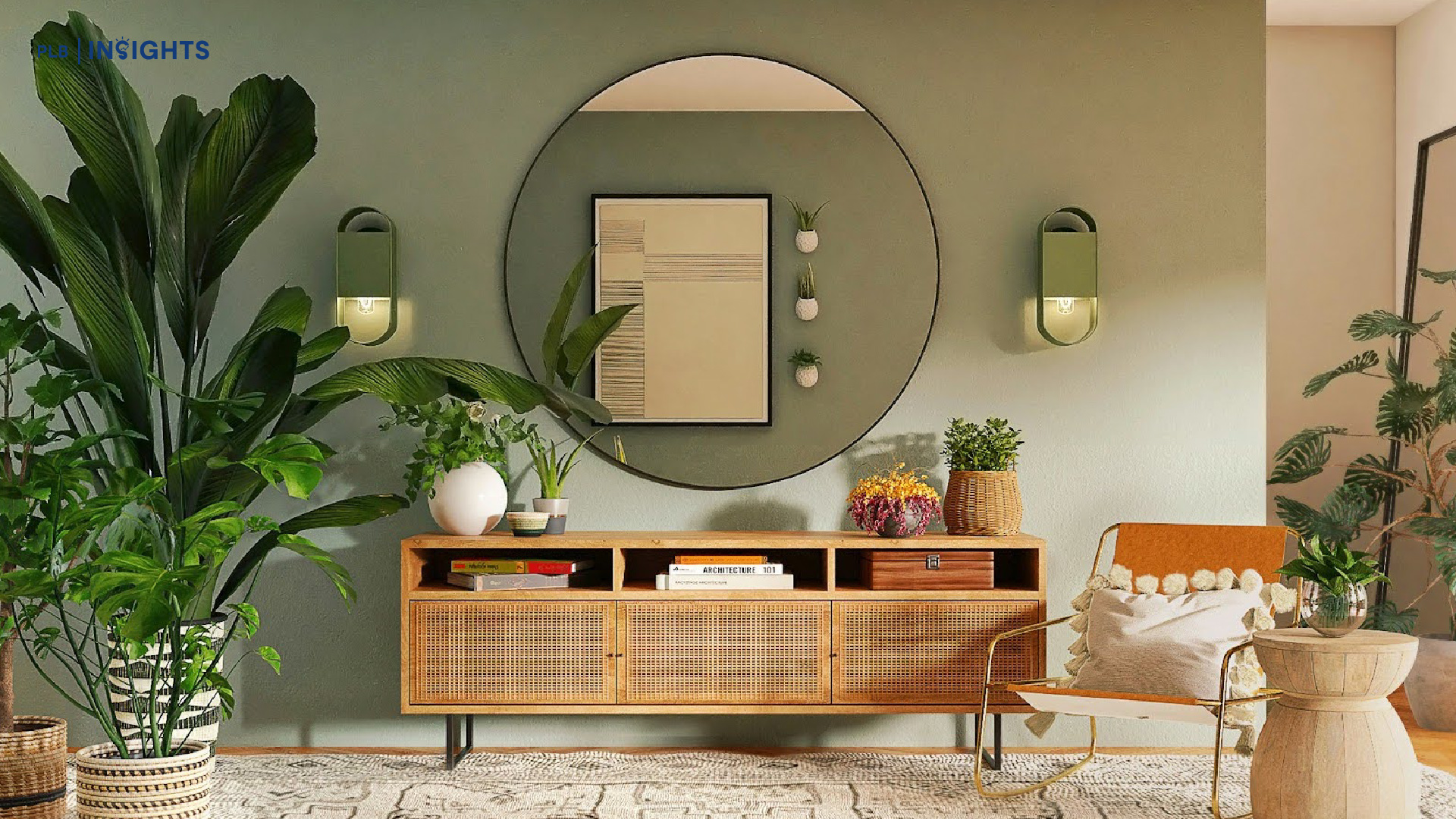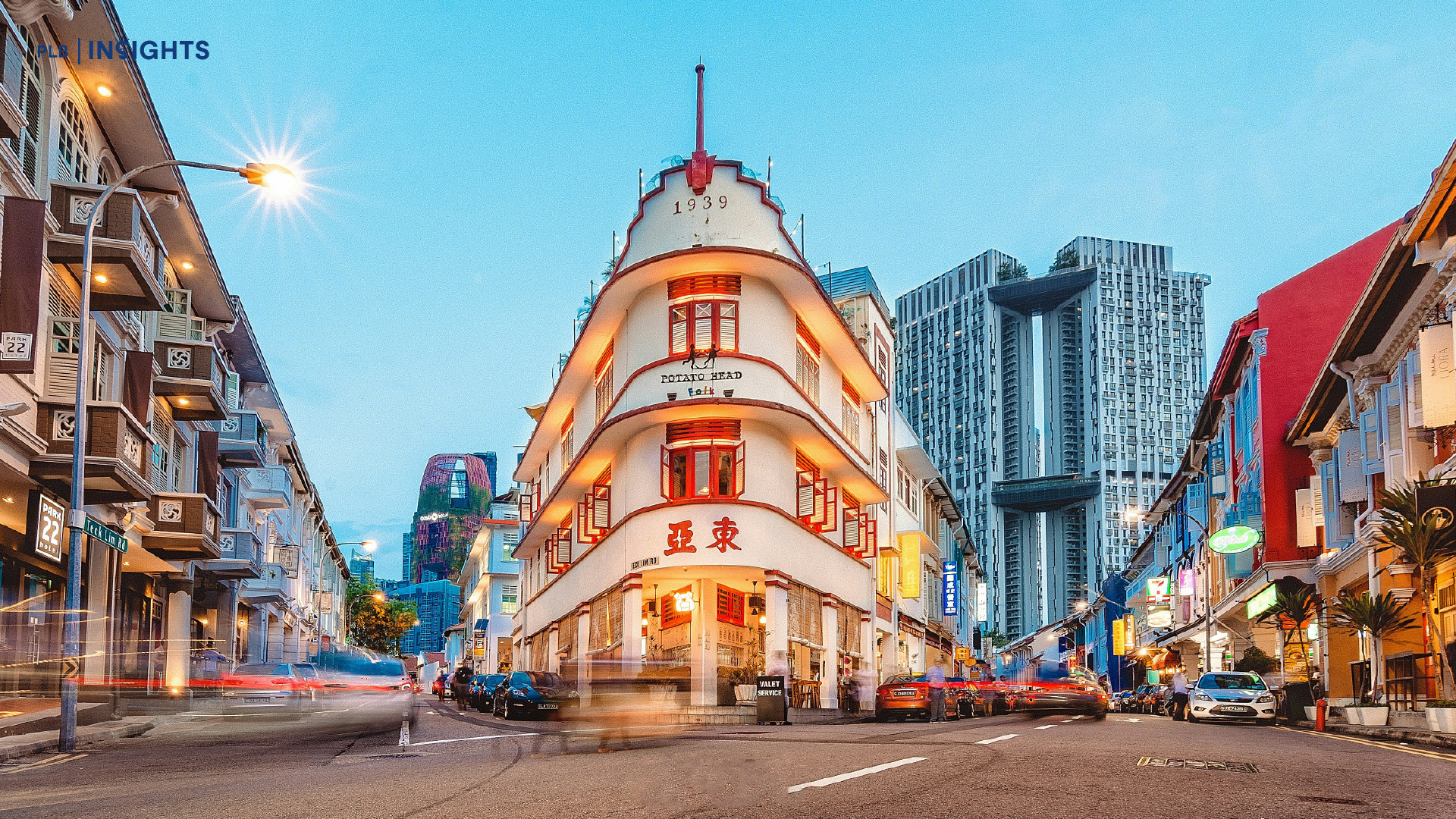
Given the current government’s pro-stance in sustainability practices, you may hear some individuals around us mention, “Singapore is a country full of rules and regulations. How are we supposed to adopt innovative and sustainable green designs for our homes?”. Although that may be true for Singapore’s public housing where restrictions are aplenty, it isn’t so for landed homes. Owners of landed homes are a tad overlooked in the country’s transition from “cleaned” to “clean” Singapore. Without many regulations bound between owners and the state, they are left to self explore methods and practices towards a more sustainable landed environment. Because of vague policies and legislation, many landed homeowners are somewhat lost and are unsure how to go about implementing green initiatives in their homes.
For those of you who do not know where to begin (and you are residing in a landed property), you’ve come to the right place! In this short article, we will be sharing 5 tips that we feel will be able to help you move towards greener initiatives for your homes instead of the usual solar panel installation which can get pretty costly.
1. Smart Home

Image of what a Smart Home can look like Courtesy Renonation
It may be a good idea to embrace the future by starting with the installation of smart home systems. Home automation today is a norm now for Singaporeans and transcends all residential types. Similar to the electric grid that will be available to Tengah residents in the near future which will allow them to track their energy consumption levels, the same can be implemented in landed homes. Room temperature monitoring can be done with an easy fix of a sensor and air conditioning preferences can be set via the effortless touch of a button on your smartphone.
Everything in today’s society is transitioning into sophisticated technology that will be seamlessly integrated into the future of homes in time to come, so why not do the switch now and be ahead of others in the sustainability journey! The problem though, is getting the older generation to embrace this.
Here’s a list of smart home features which we feel is a must-have!
2. Green your home

House with Bamboo veil in Singapore Courtesy ArchDaily
Over the years, we can see notable increases in air pollution and the loss of green spaces as urbanisation rate picks up in Singapore. This constitutes the importance of prudent practices of sustainable and green living for our future generations to continue reaping the benefits.
The second tip would be to integrate natural elements into your home via the installation of fixtures in both the exterior and interior of your home. Green design is on the rise with the global awareness of sustainable living. How can you incorporate such features into your home?
One idea would be to install a living wall on the exterior or even in your home. A very good example of breathtaking living walls that we see in plain sight would be those that are installed in our airport. Not only does it emulate the fact that Singapore is a green city filled with flora and fauna, it also promotes the idea of sustainability. Since there are not many landed homes that we have seen so far that incorporated such a design to the exterior walls of their homes, if you were to implement this idea, be assured that your property will be second to none as it will definitely enhance the outlook of your home! We’ve also seen these in various office spaces as well!

Image showing living wall on building of Terminal 4 Courtesy GWS
What are some benefits of a living wall? From cooling ambient temperatures to creating a natural air purification system if installed inside your home, a living wall provides a welcoming environment which enhances productivity and natural well-being of occupants. Not to mention, if it is on your home exterior, it absorbs road noise! Living walls are generally low-maintenance, as most of them will come with their own water delivery system; self-sustainable so you do not have to keep watering and mowing every other day. (there is also no way for you to do so when it is a vertical fixture) However, from time-to-time, you definitely need to hire a professional to help maintain the upkeep of your green wall. Other than that, it gives a healthy take for the common saying “staring at a wall”.
Specially for the interests of inter-terraces owners, don’t worry as we’ve got you covered as well! We understand that sometimes it may get a tad tricky when you want to plant your green fingers on your limited piece of land. What you can do instead is to look up and consider drafting a green project for your roof, that’s right, we are talking about a green roof! Although it may be pleasing to the eye, let us not forget the main reason why building a green roof can be environmentally friendly.
Green roofs can be beneficial to the environment through reducing the urban heat island effect. Bringing back the point of Singapore’s urbanisation rate, urban heat reduction is essential to ensure that the atmosphere and environment remains at a healthy rate for flourishing habitation. Another nugget that we would like to share with you is that green roofs also have the ability to reduce and slow stormwater runoff. A little thus goes a long way in ensuring that stream impairment does not occur in your direct neighbourhood! We’ve placed a reference for what materials are needed for a green roof for a better understanding below.

Image showing what material is needed for a green roof Courtesy ResearchGate
3. Green Architecture

Landed home in Singapore with sustainable architecture Courtesy Theodore Chan
Eco homes. You may have seen many “tiny homes” surfacing online in countries like Australia with their intricate works and detailings that promote and cater towards a sustainable lifestyle. Although Singapore does not promote tiny house living, fret not! We will be bringing you some architectural inspiration that may have been lifted off from a tiny home to be fit into your much bigger home instead!
The biggest tip that architects will give you when designing an eco-friendly home would be to have minimal walls to promote cross-ventilation throughout the house. Having too many walls in a big house would block the natural circulation of air which is why you may end up having to use more air-conditioners in your rooms. However, you do not need to knock down all the walls in your home but instead you just have to pre plan an efficient layout that will not obstruct any natural air flow within your home.
Airwells are also becoming increasingly popular among homeowners in recent years though it was commonly adopted in conservation houses like these:
Airwells that are made of glass that has two or three layers with a vacuum in between can prevent heat loss; (double or triple-glazed windows). Such designs create the stack-ventilation effect which is achieved when the air within grows warmer than the surrounding temperature, the warmer and lower-density air will rise.
This in return would bring you lesser charges on your utility bills as you will be able to save on energy used to power air conditioners for long hours, not that you need it, but it’s the overall cooling of the home that you are looking for.
The type of material that is being used for flooring and surfaces in general can also play a role in refuting heat and keeping your home cool. It is understood that Singaporeans generally love parquet floorings because of the modern and contemporary feel that they give off. However, such material retains and traps heat and will thus lead to your floor feeling warm to the touch. Our suggestion? You can choose other materials such as natural stone, marble or porcelain tiles which are able to withstand and even dissipate heat fast.
Another idea that should not be overlooked would be the installation of water features to further boost the air flow in your home. Water features not only enhance the ambience to create a zen feel but they can also act as a drainage element. Instead of the usual underground drain running underneath the house, a water feature can serve as a rainwater harvesting/ management device that collects rainwater before eventually outflowing it into the public drain, thus creating a buffer in between skies and land to prevent flooding in cases of heavy rains.
4. Green Appliances
For the fourth tip of the day, let us move on to some that can be accomplished within a shorter period of time. Instead of bringing in big fixtures and installations, why not start from within – from replacing appliances or buying those that are eco-friendly and less energy consuming!

Bosch Cooker Hood with Green Technology Courtesy Bosch
Bosch and Hitachi are the few brands that have pledged to submit to greener solutions for their appliances. Bosch have rolled out their own range of appliances that make use of green technology which will then allow for maximum efficiency at lower energy consumption rates. So in our opinion, it is pretty much a win-win situation for homeowners who do this efficient and economical switch. Just an extra tip, induction electric hobs are also more efficient than conventional electric, ceramic or halogen hobs and respond as quickly as gas because they make use of a different technology.
Another tip to share for you to cut down on your electricity bill would be the use of laminated glass for your windows or glass installations. The last thing you would want is to have a home with lots of glass that allows for heat to penetrate through, creating a free sauna in your home and leading to you having to blast the A/C every other day.
5. Furniture made from responsible resources
Lastly, let us not forget the emergence of furniture that is being made from responsible sources. Other than those that you can get from IKEA, you can also get such furniture from Crate & Barrel and Commune, where human-centric designs can be bought. Other sustainable furniture brands include:
List of brands
-
Originals
-
Journey East
-
Hommage Lifestyle
-
Soul and Tables
-
Urban Salvation

Dining set from Urban Salvation Courtesy Home and Decor
Some things to note for when you go shopping at these stores would be to look out for certain certifications to ensure that the furniture is 100% reliably sourced and sustainable.
There are three most common international certifications in Singapore.
-
The Forest Stewardship Council Certification (FSC) tells consumers that forest operations have met their requirements before manufacturing the product.
-
The Programme For Endorsement Of Forest Certification (PEFC) endorses that the forest where the resource came from fulfils the sustainable forest criteria
-
The Greenguard Certification highlights that the product has low chemical emissions and no harmful process was involved in the manufacturing stage.
Concluding remarks
There are many other ways in which you can make a difference in Singapore’s green initiatives by converting your home into a “green” house. Although photovoltaic panels, small wind turbines or electricity from a ‘green’ supplier are currently not adopted practices in Singapore, we shall see what the future holds for our journey towards sustainable living.
While many times elaborately designed homes may just be too out of reach, there are plenty of ways that you can reduce your carbon footprint without having to move to some remote part of the Swiss Alps and risk eating berries for the rest of your life. Simple changes around your home can make a big impact on the environment and also on your pocket which will go a long way. It all starts with you.
Let us know in the comments what other ideas for sustainable and green homes you may have that were not mentioned in this article! Otherwise, let’s go green!








